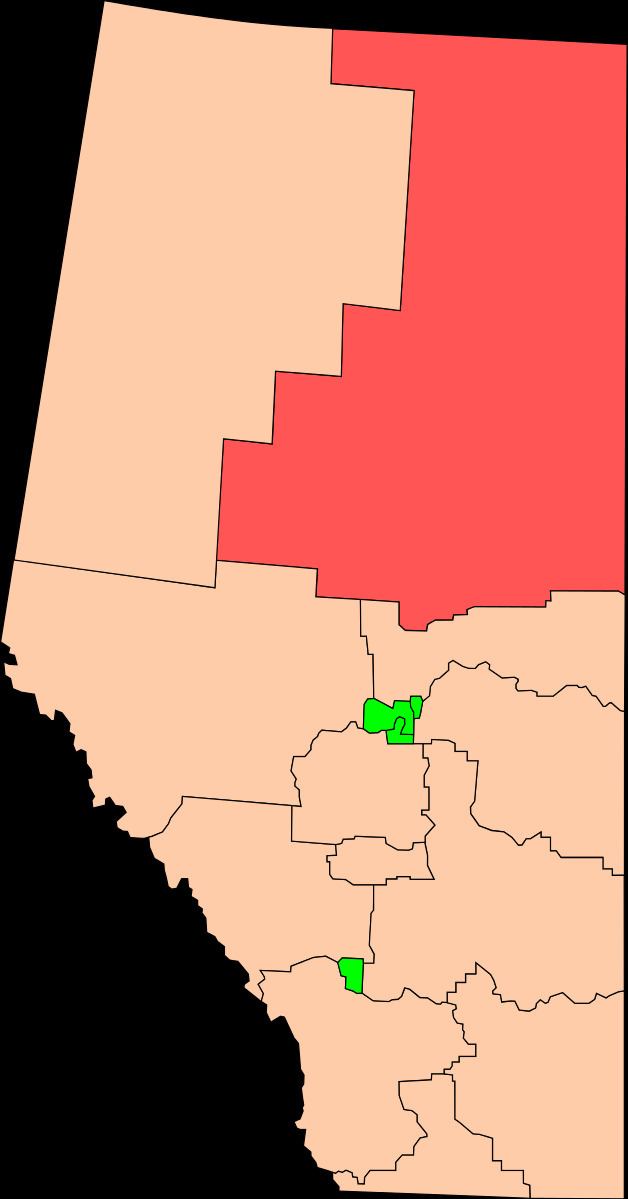First contested 1968 District webpage profile, map Elector 71,621 | District created 1966 Last contested 2011 Population (2011) 115,372 District abolished 2013 | |
 | ||
Census divisions Allison Bay 219, Beaver Lake 131, Bondiss | ||
Fort McMurray—Athabasca (formerly Athabasca) was a federal electoral district in Alberta, Canada, that was represented in the House of Commons of Canada from 1968 to 2015. It was a predominantly a rural riding in northeast Alberta, representing the Regional Municipality of Wood Buffalo, the Municipal District of Opportunity No. 17, the Municipal District of Lesser Slave River No. 124, Big Lakes County, Lac La Biche County, Athabasca County and the southeast part of Northern Sunrise County.
Contents
Demographics
According to the Canada 2011 CensusEthnic groups: 65.8% White, 22.1% Aboriginal, 3.8% South Asian, 2.5% Filipino, 1.9% Black, 1.2% Arab
Languages: 80.7% English, 4.9% Cree, 3.1% French, 1.6% Tagalog
Religions: 67.3% Christian (33.4% Catholic, 7.3% Anglican, 5.0% United Church, 3.8% Pentecostal, 1.5% Lutheran, 1.4% Baptist, 1.3% Christian Orthodox, 13.6% Other Christian), 3.4% Muslim, 1.5% Hindu, 26.2% No religion
Median income (2010): $47,348
History
It was created as "Athabasca" riding in 1966 from Athabaska and Peace River ridings.
In 2004, it was renamed "Fort McMurray—Athabasca".
Following the Canadian federal electoral redistribution, 2012, this riding was abolished. 69% was redistributed into the new riding of Fort McMurray—Cold Lake, 19% to Peace River—Westlock (notably the towns of Slave Lake and High Prairie among others) and 11% to Lakeland.
Members of Parliament
This riding has elected the following Members of Parliament:
